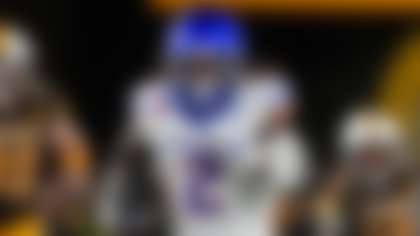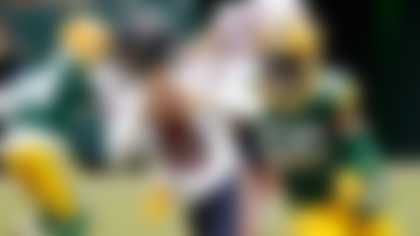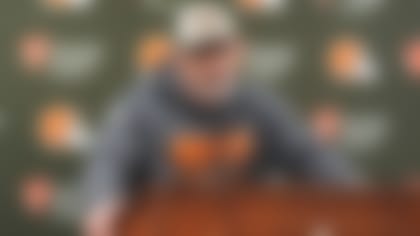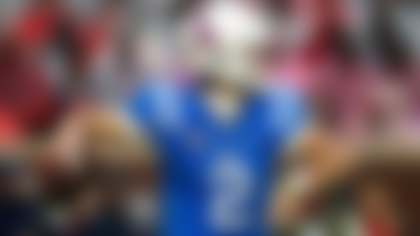The NFL and organizations at every level of football have operated with it as their backdrop over the past several years. It has changed the way the game is played and raised red flags that the sport hasn't dealt with since Teddy Roosevelt was in office.
And on Tuesday morning, at a federal courthouse in Philadelphia, it begins: Some 4,100 (and counting) plaintiffs in 222 consolidated lawsuits will start the process of having their case heard -- a process that, absent a settlement, could last until the end of the decade.
If you don't fully get what's going on here, that's understandable. It's complicated.
Just know this: Every powerbroker in the sport is paying attention. These lawsuits can potentially play a big role in determining which route is taken from here.
So what do you, the football fan, need to know? After talking to lawyers on both sides -- and bouncing plenty off of my old lockout buddy Gabe Feldman, a professor of sports law at Tulane -- I put together a list of questions and answers to update everyone as to where this stands. Let's go ...
What's happening Tuesday?
Federal judge Anita Brody will be hearing the NFL's motion to dismiss based on the preemption doctrine, which argues that the collective bargaining agreement -- and not the legal system -- should govern these cases. The NFL's argument is simple: Post-career conditions for workers were collectively bargained.
The players will counter that because the league set up the Mild Traumatic Brain Injury committee (made up of doctors) independently of the CBA, their claims of negligence and fraud also exist outside the realm of the CBA; they'll say this proves the league has taken on traumatic brain injury as its duty.
To boil this down, imagine that someone you don't know has been in an accident and is lying on the side of the road, needing help. If you drive past without attempting to offer assistance, you haven't done anything legally wrong. But if you stop and perform CPR incorrectly, and the person winds up being injured, you might be held accountable.
Are these all one case now?
This is not a class-action lawsuit, which would split any settlement or award evenly between the plaintiffs. The 222 lawsuits were consolidated to streamline the process on the front end, so that all pre-trial motions, such as the one to be heard Tuesday, can be taken care of more efficiently.
If there isn't a settlement before the pre-trial process is complete, the multi-district litigation certainly could be split up and sent to the individual courts in which all of the cases were originally filed. However, most people think that eventually there'll be a settlement of some sort, because the cost associated with going forward would be significant for the league.
How different are each of the cases?
Many involve ex-players facing serious issues. Former fullbacks Kevin Turner and Steve Smith are suffering from ALS. Ex-Chicago Bears quarterback Jim McMahon is dealing with dementia, while ex-New Orleans Saints lineman Kyle Turley has a seizure disorder.
On the flip side, there are 35 punters and 22 kickers suing, according to NFL records. There are 387 guys who have never played a single NFL snap, along with about 100 players in multiple suits. Filing a workers' compensation claim in California has become an automatic step in the retirement process, and filing a concussion lawsuit is becoming nearly as routine. That's why Pat White, who sued the NFL, found himself in tricky waters; last week, he signed with the Washington Redskins (and wound up removing himself from the litigation). Same with Patrick Chukwurah, who played in the divisional playoffs for the Seattle Seahawks while suing the league (but did not drop his suit), and Brett Romberg, who sued in 2011, signed with Atlanta Falcons later that year and played out that season.
Trouble is, it's hard to draw simple conclusions from all of that. Consider former practice-squad player Mitch White, one of the hundreds who never played a down in the league. He suffered concussions on consecutive plays while assigned to NFL Europe and is now confined to a dark bedroom five days a week. As is the case with plenty of the facets of this situation, very little is black and white.
Will this judge split up the 4,100 plaintiffs?
No. At least not yet. Judge Brody will simply hear the legal merits of each side's argument, as outlined above, and also give 30 minutes apiece to the parties involved in the "motion to sever" filed by the helmet manufacturers as part of a secondary case (the manufacturers are being sued by a percentage of the 4,100 plaintiffs).
If the judge were to split the group up, it would be to separate those who played under a collective bargaining agreement from those who didn't. The first CBA was adopted in 1968, and after the 1987 strike, from 1989-1993, there was no CBA, so it's possible the judge divides the parties along those lines before filing an opinion.
What's next?
More waiting. It's a near certainty that Brody won't rule from the bench. It could be a few months before she makes a ruling and writes an opinion.
If the case is allowed to go forward, the next step would be discovery, which might or might not be limited by the judge. Either way, the league and the sport could face a potentially serious public relations issue.
That, of course, would provide more motivation for the league to settle this case out of court. Tuesday's hearing represents the first step that needs to be taken to get there. Once the judge rules, real movement could begin in terms of putting this whole thing to bed.
Or, if an agreement can't be reached then, the door could open to a battle that would be waged not over days and weeks, but months and years.
Follow Albert Breer on Twitter @AlbertBreer.











